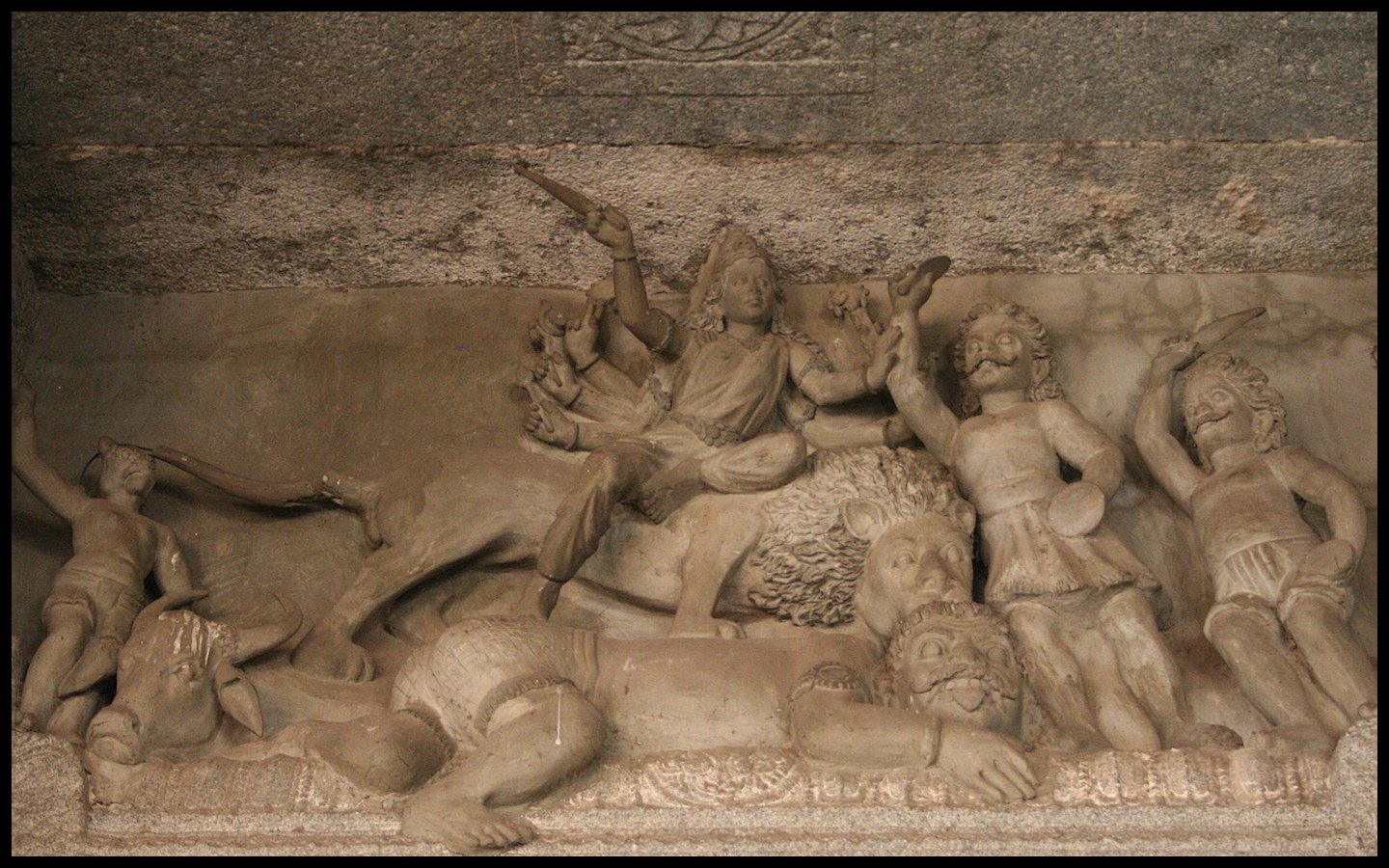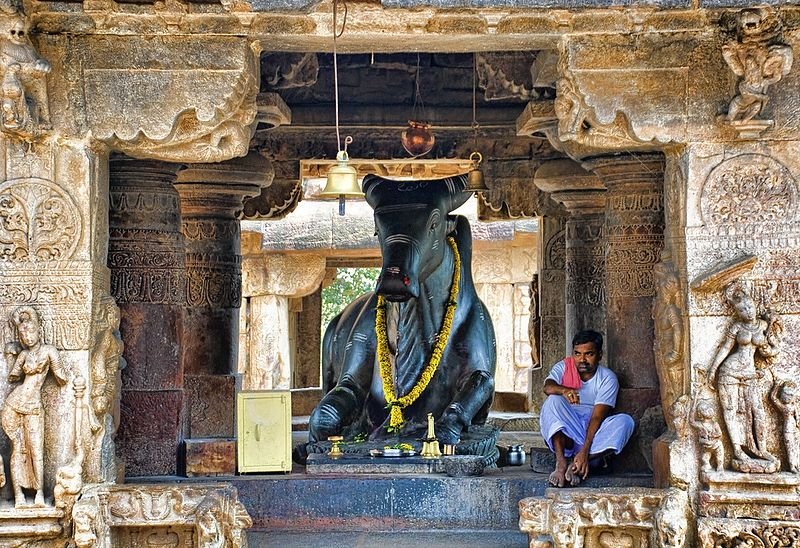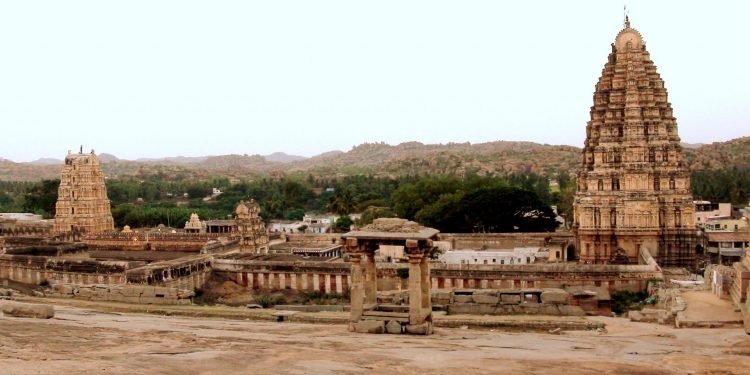Virupaksha Temple is part of the Group of Monuments at Hampi, designated a UNESCO World Heritage Site. Virupaksha is a form of Shiva and has other temples dedicated to him, notably at the Group of Monuments at Pattadakal, another World Heritage Site.
Shrine’s History
The temple’s history is uninterrupted from about the 7th century. The Virupaksha-Pampa sanctuary existed well before the Vijayanagara capital was located here. Inscriptions referring to Shiva date back to the 9th and 10th centuries. What started as a small shrine grew into a large complex under the Vijayanagara rulers. Evidence indicates there were additions made to the temple in the late Chalukyan and Hoysala periods, though most of the temple buildings are attributed to the Vijayanagar period.
The huge temple building was built by Lakkana Dandesha, a chieftain under the ruler Deva Raya II of the Vijayanagara Empire. Under the Vijayanagara rulers, in the middle of the 14th century, there began a flowering of native art and culture. When the rulers were defeated by Muslim invaders in the 16th century, most of the wonderful decorative structures and creations were systematically destroyed. The religious sect of Virupaksha-Pampa did not end with the destruction of the city in 1565.
Worship there has persisted throughout the years. At the beginning of the 19th century, there were major renovations and additions, which included ceiling paintings and the towers of the north and east gopura

Architectural Relevance of This Shrine
At present, the main temple consists of a sanctum, three antechambers, a pillared hall and an open pillared hall. A pillared cloister, entrance gateways, courtyards, smaller shrines and other structures surround the temple. The nine-tiered eastern gateway, which is the largest at 50 meters, is well-proportioned and incorporates some earlier structures. It has a brick superstructure and a stone base. It gives access to the outer court containing many sub-shrines. The smaller eastern gateway leads to the inner court with its numerous smaller shrines.
A narrow channel of the Tungabhadra River flows along the temple’s terrace and then descends to the temple kitchen and out through the outer court. Krishnadevaraya, one of the famous kings of the Vijayanagara Empire was a major patron of this temple. The most ornate of all structures in the temple, the central pillared hall is believed to be his addition to this temple. So is the gateway tower giving access to the inner courtyard of the temple? Inscriptions on a stone plaque installed next to the pillared hall explain his contribution to the temple. It is recorded that Krishna Devaraya commissioned this hall in 1510 AD.

Shrine’s Map Location and How to Go There
By RoadThe Nearest Bus stop is Hampi.Hampi has a good road network and is connected to many towns and cities in Karnataka by this network. There are a lot of government and private buses that travel between Hampi and several towns and cities in the state. By Rail
The Nearest railway station to Virupaksha temple is Hospet Railway Station which is 9 km away from Virupaksha Temple.
By Air
The Nearest airport to Virupaksha Temple is a Bellary airport , Bellary which is 54 km away from Virupaksha Temple .

Shrine Timings
9:00 AM – 1:00 PM 5:00 PM – 9:00 PM
Events Celebrated at This Shrine
The temple continues to prosper and attracts huge crowds for the betrothal and marriage festivities of Virupaksha and Pampa in December. In the month of February the annual chariot festival is celebrated here
Extra Information About this Shrine
Usually, the sanctum is closed in the noon. So entry into the campus may not be possible at that point in time.













































